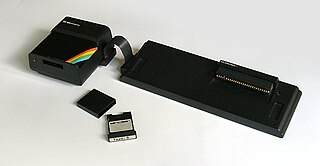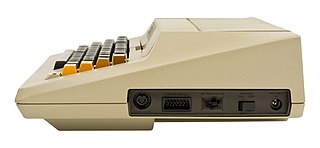The Internet Control Message Protocol (ICMP) is a supporting protocol in the Internet protocol suite. It is used by network devices, including routers, to send error messages and operational information indicating success or failure when communicating with another IP address. For example, an error is indicated when a requested service is not available or that a host or router could not be reached. ICMP differs from transport protocols such as TCP and UDP in that it is not typically used to exchange data between systems, nor is it regularly employed by end-user network applications.

Internet Protocol version 4 (IPv4) is the first version of the Internet Protocol (IP) as a standalone specification. It is one of the core protocols of standards-based internetworking methods in the Internet and other packet-switched networks. IPv4 was the first version deployed for production on SATNET in 1982 and on the ARPANET in January 1983. It is still used to route most Internet traffic today, even with the ongoing deployment of Internet Protocol version 6 (IPv6), its successor.
In computer networking, the maximum transmission unit (MTU) is the size of the largest protocol data unit (PDU) that can be communicated in a single network layer transaction. The MTU relates to, but is not identical to the maximum frame size that can be transported on the data link layer, e.g., Ethernet frame.

ping is a computer network administration software utility used to test the reachability of a host on an Internet Protocol (IP) network. It is available for virtually all operating systems that have networking capability, including most embedded network administration software.
In computer networking, the User Datagram Protocol (UDP) is one of the core communication protocols of the Internet protocol suite used to send messages to other hosts on an Internet Protocol (IP) network. Within an IP network, UDP does not require prior communication to set up communication channels or data paths.
Simple Network Management Protocol (SNMP) is an Internet Standard protocol for collecting and organizing information about managed devices on IP networks and for modifying that information to change device behavior. Devices that typically support SNMP include cable modems, routers, network switches, servers, workstations, printers, and more.
The Address Resolution Protocol (ARP) is a communication protocol used for discovering the link layer address, such as a MAC address, associated with a given internet layer address, typically an IPv4 address. This mapping is a critical function in the Internet protocol suite. ARP was defined in 1982 by RFC 826, which is Internet Standard STD 37.

A serial port is a serial communication interface through which information transfers in or out sequentially one bit at a time. This is in contrast to a parallel port, which communicates multiple bits simultaneously in parallel. Throughout most of the history of personal computers, data has been transferred through serial ports to devices such as modems, terminals, various peripherals, and directly between computers.
High-Level Data Link Control (HDLC) is a communication protocol used for transmitting data between devices in telecommunication and networking. Developed by the International Organization for Standardization (ISO), it is defined in the standard ISO/IEC 13239:2002.
The Serial Line Internet Protocol (SLIP) is an encapsulation of the Internet Protocol designed to work over serial ports and router connections. It is documented in RFC 1055. On personal computers, SLIP has largely been replaced by the Point-to-Point Protocol (PPP), which is better engineered, has more features, and does not require its IP address configuration to be set before it is established. On microcontrollers, however, SLIP is still the preferred way of encapsulating IP packets, due to its very small overhead.
Serial Peripheral Interface (SPI) is a de facto standard for synchronous serial communication, used primarily in embedded systems for short-distance wired communication between integrated circuits.
In computer networking, Layer 2 Tunneling Protocol (L2TP) is a tunneling protocol used to support virtual private networks (VPNs) or as part of the delivery of services by ISPs. It uses encryption ('hiding') only for its own control messages, and does not provide any encryption or confidentiality of content by itself. Rather, it provides a tunnel for Layer 2, and the tunnel itself may be passed over a Layer 3 encryption protocol such as IPsec.

The ZX Interface 1, launched in 1983, was a peripheral from Sinclair Research for its ZX Spectrum home computer. Originally intended as a local area network interface for use in school classrooms, it was revised before launch to also act as the controller for up to eight ZX Microdrive high-speed tape-loop cartridge drives. It also included a DE-9 RS-232 interface capable of operating at up to 19.2 kbit/s. At hardware level it was fundamentally a voltage adaptor, the serial protocol being implemented in software by bit-banging. This led to problems when receiving data, but not when transmitting.

Modbus or MODBUS is a client/server data communications protocol in the application layer. It was originally designed for use with its programmable logic controllers (PLCs), but has become a de facto standard communication protocol for communication between industrial electronic devices in a wide range of buses and networks.
LIN is a network protocol used for communication between components in modern vehicles. It is a low-cost single-wire serial protocol that supports communications up to 19.2 Kbit/s with a maximum bus length of 40 metres (131.2 ft).

The RapidIO architecture is a high-performance packet-switched electrical connection technology. It supports messaging, read/write and cache coherency semantics. Based on industry-standard electrical specifications such as those for Ethernet, RapidIO can be used as a chip-to-chip, board-to-board, and chassis-to-chassis interconnect.
Real-Time Messaging Protocol (RTMP) is a communication protocol for streaming audio, video, and data over the Internet. Originally developed as a proprietary protocol by Macromedia for streaming between Flash Player and the Flash Communication Server, Adobe has released an incomplete version of the specification of the protocol for public use.
ccTalk is a serial protocol in widespread use throughout the money transaction and point-of-sale industry. Peripherals such as the currency detectors for coins and banknotes found in a diverse range of automatic payment equipment such as transportation, ticketing, payphones, amusement machines, and retail cash management use ccTalk to talk to the host controller. The ccTalk protocol is an open standard.
Consumer Electronics Control (CEC) is a feature of HDMI designed to control HDMI connected devices by using only one remote controller; so, individual CEC enabled devices can command and control each other without user intervention, for up to 15 devices. For example, a TV remote can also control a digital video recorder and a Blu-ray player.

The Serial Input/Output system, universally known as SIO, was a proprietary peripheral bus and related software protocol stacks used on the Atari 8-bit computers to provide most input/output duties for those computers. Unlike most I/O systems of the era, such as RS-232, SIO included a lightweight protocol that allowed multiple devices to be attached to a single daisy-chained port that supported dozens of devices. It also supported plug-and-play operations. SIO's designer, Joe Decuir, credits his work on the system as the basis of USB.






